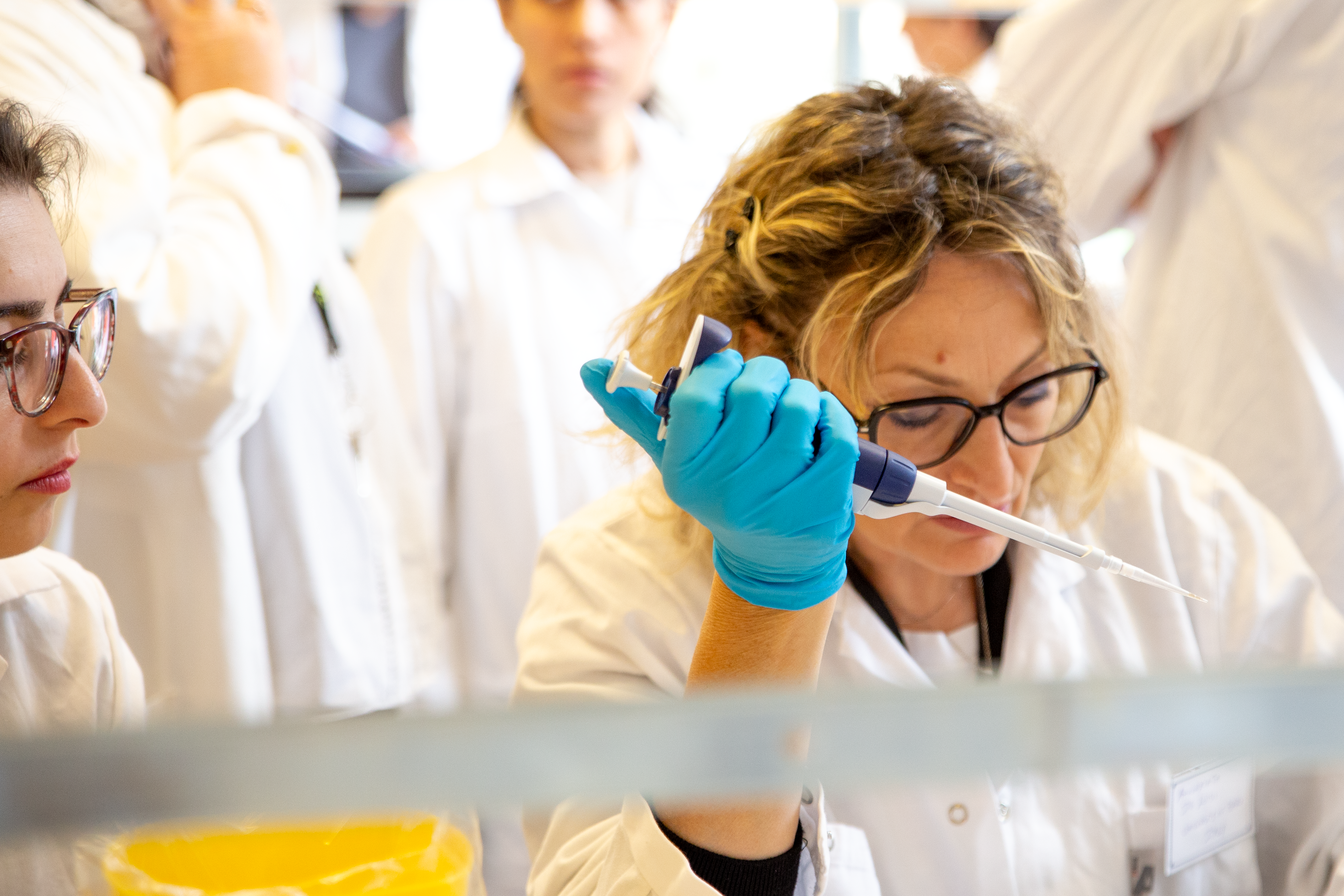Introductory HiC Course

The introductory group consisted of researchers with no previous experience of the HiC technique, and the course videos contain introductory content. This group was led by Morten Skage (University of Oslo, NO) and Irene Fabiola Roman Maldonado (Sanger Institute, UK), assisted by Karine Labadie (Genoscope, FR). Group participants were Fernando Cruz Rodriguez (CNAG, ES), Graeme Oatley (Sanger Institute, UK), Simona Buonanno (UniBari, IT), Lorenzo Ballini (UniFi, IT), Leonardo Girlanda (UniFi, IT) and Annunziata De Luisi (UniBari, IT).
Filming was performed by Morten Skage, Irene Fabiola Roman Maldonado, Jill Jaworski (SciLifeLab Training Hub), and Olga Vinnere Pettersson.
- The course material is organized from this group’s sample preparation to discussion of the results
- Skip to the full course playlist section to watch the full Introductory course!
Introductory Material
Introduction and Safety Considerations - Follow Irene and Morten as they describe an overview of how the technique is scheduled, safety considerations, and some background on how the technique is implemented and developed in a production setting.
Sample preparation
For the introductory group, herring was used for the sample, and was prepared according to the Arima HiC standard input protocol. Additionally, Irene demonstrated low input sample preparation for krill. The following videos demonstrate and discuss how to prepare samples for HiC.
Sample preparation instruction - Tissue weighing, handling tips and grinding with liquid nitrogen. Runtime: 22 minutes.
Sample crosslinking - Crosslinking the samples, and the importance of a homogenous solution. Runtime: 18 minutes.
Low input sample preparation - The krill samples are crosslinked first, and then tissue grinding with a power masher. The differences between low and standard input protocols are discussed, and the samples chosen for the HiC reactions. Runtime: 13 minutes.
Estimating Input
Estimating input amount - Estimating input for krill and herring samples, and how low input and standard input approaches differ. Runtime: 9 minutes. ** Note: for a demonstration of steps 5-11 including Qubit quantification, see the Challenging Samples module!
Choosing samples for HiC reactions - How to approach the decision on which input amounts to proceed with. Runtime: 6 minutes.
HiC Reactions
HiC Reactions - Follow along as the krill and herring are processed with the Arima HiC reactions. Runtime: 27 minutes.
QC1
QC1 - Considerations for when to proceed with QC1, and how the behaviour of the sample can indicate genomic differences. Runtime: 18 minutes.
Discussion of results & next steps - Interpretation of QC1 results and an overview of the next steps. Runtime: 6 minutes.
Irene Fabiola Roman Maldonado, presenting the Introductory HiC lab results - The final group discussion of the results, led by Irene. Runtime: 15 minutes.
Data
All samples from this course have been successfully sequenced and will be made available in public repositories.
| Organism | ENA Database Link | Sequence from |
|---|---|---|
| Herring | Clupea harengus (Project PRJEB96454) | Uppsala University |
| Krill | Meganyctiphanes norvegica (Project PRJEB96454) | Uppsala University |
Full Introductory HiC Playlist
Citation
The Arima HiC protocol shown in this course is © 2019, Arima Genomics, Inc. All rights reserved.
The video materials from this course are available for reuse under ![]()
Please cite the course material as:
Morten Skage, Irene Fabiola Roman Maldonado, Karine Labadie, Lorenzo Ballini, Simona Buonanno, Fernando Cruz Rodriguez, Annunziata De Luisi, Leonardo Girlanda, Graeme Oatley, Ave Tooming-Klunderud, Olga Vinnere Pettersson (2025). Biodiversity Genomics Europe and SciLifeLab Introductory HiC Course. Retrieved from https://scilifelab-training.github.io/BGE-HiC-Course/module1.html